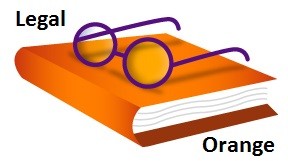I do a lot of claimant work. A lot. Some blogs include references to tactics and costs building. It is only right that I seek to repent for these sins by explaining how defendants can GENUINELY settle on best terms.
Rule 1
“Settle on best terms” generally means “Settle this claim in the cheapest possible way”. Only on occasion will there be a reputation/brand issue to take into account as part of “best terms”. Rule 1 in this situation is therefore to treat your client’s money as if it is your own.
Rule 2
Repeat rule 1 to yourself (kind of like Fight Club…) This converts to rule 2 as being: achieving settlement in the cheapest possible way taking EVERYTHING into account.
Rule 3 (aka “what is everything to take into account”)
Remember that your client foots the bill for 3 things within their total reserve: (1) C’s damages; (2) C’s costs; and (3) D’s costs. Remind yourself of this again. Defendants frequently overlook the last section and incur ridiculous fees generated by taking silly points and/or investigating irrelevant matters.
Rule 4
Remember the aim is to try and cap claimants on damages and their costs. Do not run up £10,000 of extra defendant costs on chipping the claimant’s damages down by £5,000. In this time the claimant’s costs will probably also have increased by £2,500 in fighting out the damages argument. As referred to above, during this time your own bill of defendant costs will have also moved upwards. Is it worth it? No. Explain to your client that the claim may be overstated, however it is more economic to pay the additional damages to avoid the client paying out more overall.
Rule 5
This is a difficult one to stomach. It often pays to admit liability. Be blunt. If your client is on the hook then write an open letter to the defendant stating liability is admitted and you will not be paying them a single penny from that point onwards in relation to their time recording in respect of liability.
Claimants love nothing better than a caveated quasi-admission. Liability being admitted subject to causation just means the following to the claimant:
THEY WANT TO SETTLE SO LET’S RAMP OUR COSTS UP AS THEY HAVE NOT MADE A CLEAR ADMISSION.
A number of County Courts have granted pre-action disclosure applications to our clients on quasi-admissions. The defendant finds no favour in drawing their quasi-admission to the Court’s attention. My favourite was the DJ’s exchange with an opponent:
DJ – “Is liability admitted or not?”
Opponent – “It is subject to causation, Sir”
DJ – “No, Mr [name withheld], it is a yes or no answer. I expect a yes or no.”
Opponent – “Sir, I cannot say that it is, but that it is subject to causation”
DJ – “I read that as a no. The applicant will receive their causation documents and costs assessed at £1,500”
From the above you will realise that once liability is admitted, the defendant can take some control over the presentation of the claim by the claimant.
Rule 6
Demand the quantum evidence in a set manner. If you think that only invoices are needed without anything further then ask for this only. State in open correspondence that you expect to be served with these documents and refuse to pay for any other costs incurred by the claimant relating to quantum (e.g. witness evidence on this point, or an expert’s report on quantum).
Once you have assessed quantum, if it is not overstated then pay the claim. If only a marginal or nominal amount is overstated then consider whether it merits challenging the payment, as the claimant may incur a lot more money in instructing an expert or counsel. The claimant may be at risk of not recovering the disbursement of instructing an expert/counsel, however is it worth taking the risk if your client has to absorb this fee? That’s your call.
Remember that your fees will be incurred in considering and dealing with all of this. If you need witness evidence from the claimant then demand it only covers certain points. If the background is well made out then ask for it to address only set points only. If you need an expert to assess them, try to arrange it so the claimant only has to attend on their own and meet with your expert.
Rule 7
Invite details of C’s costs and make a well calculated global offer. Claimants will take early-money at a lower amount to avoid WIP lock-up and the costs of provisional or detailed assessment This is particularly useful if you know the year-end date of the claimant’s solicitors’ firm!
Over and out.
Legal Orange.
